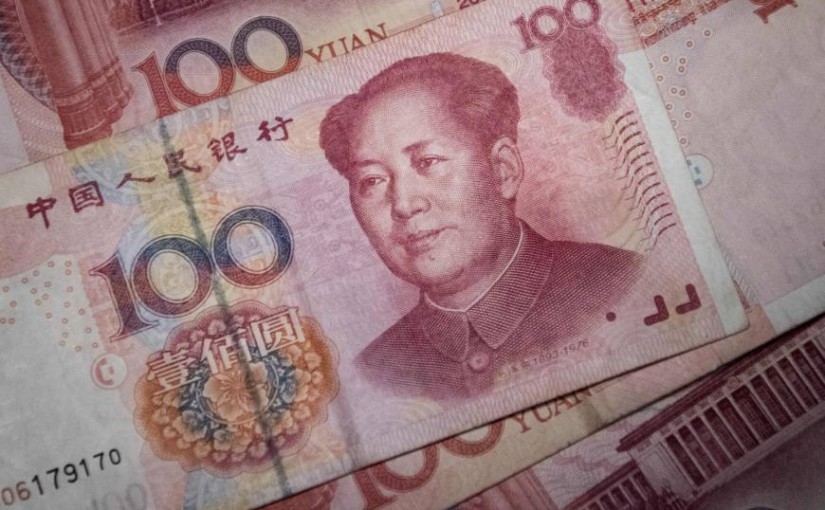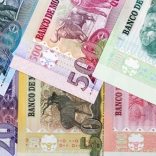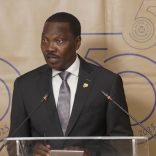Mozambique: Prices rose 0.68% in August after four months of deflation
China’s yuan joins elite club of IMF reserve currencies

The yuan took on the mantle of a global reserve currency yesterday, a milestone that is seen breathing life into China’s bond markets by prompting estimated inflows of as much as US$1 trillion (S$1.4 trillion) over the next five years.
The currency’s entry into the International Monetary Fund’s (IMF’s) Special Drawing Rights (SDR) – alongside the dollar, euro, pound and yen – comes amid China’s efforts to boost its international usage and ambitions of providing an alternative to the dollar.
The yuan joins the dollar, euro, yen and pound in the IMF’s special drawing rights (SDR) basket, which determines currencies that countries can receive as part of IMF loans. It marks the first time a new currency has been added since the euro was launched in 1999.
The IMF is adding the yuan, also known as the renminbi (“people’s money”), on the same day that the Communist Party celebrates the founding of the People’s Republic of China in 1949.
“The inclusion into the SDR is a milestone in the internationalization of the renminbi, and is an affirmation of the success of China’s economic development and results of the reform and opening up of the financial sector,” the People’s Bank of China said in a statement.
China will use this opportunity to further deepen economic reforms and open up the sector to promote global growth, the central bank added.
The IMF announced last year that it would add the yuan to the basket, so actual inclusion is not expected to affect financial markets. But it puts Beijing’s often opaque economic and foreign exchange policy in the international spotlight as some central banks add yuan assets to their official reserves.
In comments Friday, IMF Managing Director Christine Lagarde said China’s inclusion acknowledged the advances China has made “in liberalizing and improving the infrastructure of its financial markets. The continuation and deepening of these efforts, with appropriate safeguards, will bring a more robust international and financial system, which in turn will support the growth and stability of China and the global economy.”
Critics argue that the move is largely symbolic and the yuan does not fully meet the IMF’s reserve currency criteria of being freely usable or widely used to settle trade or widely traded in financial markets.
U.S. Republican presidential nominee Donald Trump has said he will formally label China a currency manipulator if he wins November’s election.
“It’s not that significant in terms of actual initial impact, it’s more symbolic — obviously for China,” said Mitul Kotech of Barclays, calling it “a step towards the currency becoming eventually a major reserve.”
China stunned investors by devaluing the currency last year, and the yuan has since weakened to near six-year lows, adding to worries about already feeble global growth.
Some China watchers also fear that Beijing’s commitment to further market opening and financial sector reforms will fade after its diplomatic success, despite repeated reassurances from Beijing it will continue with the process.
“SDR entry will pave the way for closer interaction between China’s capital market and that of the rest of the world,” Mr Tommy Xie, an economist at Oversea-Chinese Banking Corporation in Singapore, said yesterday.
“The first impact will be on the yuan, which the authorities are likely to keep stable for the next few weeks as any sudden volatility spike will damp the yuan’s image.”.
While an IMF statement on Friday said the yuan has been deemed freely usable, China has been suspected of meddling in the foreign exchange market after a shock devaluation in August last year rattled investor confidence.
It has been seen intervening heavily even offshore – driving yuan interbank rates to more than 20 per cent in Hong Kong – and clamping down on capital flows. The median estimate in a Bloomberg survey is for the Chinese currency to decline 1.1 per cent the rest of this year to 6.75 per dollar.
U.S. Treasury Secretary Jack Lew said on Thursday the yuan is “quite a ways” from true global reserve currency status. The new IMF status recognizes the “enormous” change in China in the last 10 years that had made the yuan more open, but Beijing still has work to do to make its currency and its economy more market-driven, he said. “Being part of the SDR basket at the IMF is quite a ways away from being a global reserve currency,” he said.
Still, the SDR inclusion could push central banks and sovereign funds to diversify further by increasing their yuan holdings, according to Dariusz Kowalczyk of Credit Agricole.
“This is because there is a strong correlation between a currency’s weight in the basket and its share in global FX reserve allocation, and because of the attractiveness of China government bonds,” he said.
The yuan’s addition is the first change to the SDR basket since 1999, when the euro replaced the Deutsche mark and French franc.
The new weightings will be 41.73 per cent for the dollar, 30.93 per cent for the euro, 10.92 per cent for the yuan, 8.33 per cent for the yen and 8.09 per cent for the pound.
There were 204.1 billion SDRs allocated to IMF members as of March, equivalent to around US$285 billion, compared with about US$11 trillion of global reserves.
The basket, created in 1969, gives IMF member countries who hold it the potential right to obtain any of the currencies in the basket to meet balance-of-payments needs. Inclusion could be a catalyst for central banks and sovereign wealth funds to shift funds into the yuan.
The Chinese currency constituted 1.1 per cent of official reserves in the latest IMF survey, compared with 63.7 per cent for the dollar.
However Julian Evans-Pritchard, a China specialist at Capital Economics, said the yuan’s inclusion is not likely to drive foreign demand for it.
“Contrary to what many seem to believe, this does not require that IMF members shift out of euro, yen and sterling assets into renminbi assets. Instead, it simply means that the renminbi exchange rate will begin to influence the value of SDRs,” he said.
“In practice, what determines whether central banks consider a currency a reserve asset is their confidence that they can sell that asset whenever needed into deep and liquid markets. Central banks are likely to come to their own judgement,” he added.












Leave a Reply
Be the First to Comment!
You must be logged in to post a comment.
You must be logged in to post a comment.